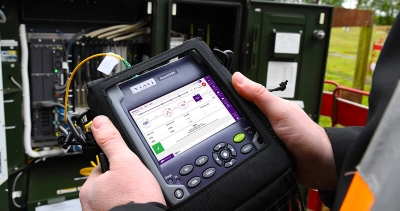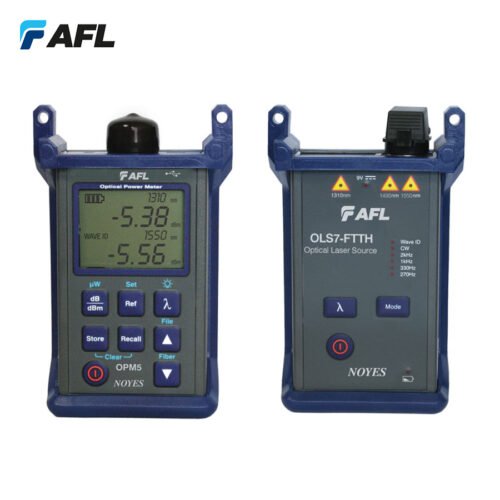Recognizing How an Optical Measurement System Enhances Precision in Industrial Applications
Optical measurement systems play a vital function in enhancing accuracy across different commercial applications. By leveraging innovative modern technologies such as laser interferometry and 3D imaging sensing units, these systems use high-resolution, non-contact measurements. This capacity decreases the threat of damaging delicate components while making certain accuracy. The influence of these systems extends beyond plain measurements. Exploring their advantages, applications, and future patterns reveals an intricate landscape of technology and challenges that qualities closer assessment.
The Basics of Optical Measurement Systems
Optical measurement systems work as essential tools in different commercial applications, providing accurate data collection and analysis. These systems use light as a main means of measurement, leveraging optical principles to assess dimensions, settings, and surface features of items. They include elements such as lasers, cameras, and sensors, which function together to record high-resolution images and data.
The innovation allows non-contact measurements, minimizing the threat of damaging sensitive elements. Optical measurement systems are functional, finding energy in top quality control, setting up confirmation, and dimensional evaluation across various sectors. They are specifically effective in settings where conventional measurement strategies may fail, such as gauging complex geometries or observing fast activities.
As markets continue to progress, the assimilation of optical measurement systems will stay essential for guaranteeing precision and effectiveness, eventually boosting item quality and functional productivity in different making procedures.
Trick Technologies Behind Optical Measurement
Key technologies such as laser interferometry strategies and 3D imaging sensing units play a vital role in the effectiveness of optical measurement systems (robotic vision). These technologies enable accurate dimensions and detailed evaluation in different commercial applications. Comprehending their capabilities is necessary for utilizing the full potential of optical measurement systems
Laser Interferometry Techniques
Numerous laser interferometry strategies have revolutionized the area of optical measurement, using unprecedented accuracy and accuracy in various industrial applications. These strategies use the disturbance of systematic light waves to measure range, variation, and surface area abnormalities with nanometer-level precision. Typical methods consist of Michelson interferometry, which divides a beam and examines phase changes, and Fabry-Pérot interferometry, recognized for its high resolution in determining tiny changes. In addition, laser Doppler interferometry utilizes frequency shifts to analyze speed, making it vital in vibrant measurements. The flexibility of these methods allows for their assimilation right into diverse manufacturing processes, improving top quality control and making certain adherence to rigid resistances. Therefore, laser interferometry proceeds to play an important role beforehand commercial measurement criteria.
3D Imaging Sensors
Improvements in measurement modern technology have resulted in the development of 3D imaging sensing units, which play a considerable duty in optical measurement systems. These sensors record three-dimensional data via various methods such as triangulation, time-of-flight, and structured light. By properly rebuilding the form and dimensions of things, 3D imaging sensors improve the accuracy of measurements in commercial applications. They give real-time feedback, assisting in quality control and making certain that components satisfy rigorous specifications. Furthermore, their ability to operate in tough atmospheres, such as varying illumination conditions, makes them very useful in producing processes. As industries increasingly adopt automation, the assimilation of 3D imaging sensing units into optical measurement systems is expected to drive additional renovations in efficiency and accuracy.
Benefits of Optical Measurement in Sector
Standard measurement methods have actually long been the standard in industrial settings, optical measurement systems offer significant advantages that boost accuracy and efficiency. These systems utilize light to record information, leading to high-resolution measurements that are often unattainable with conventional techniques. The non-contact nature of optical dimensions reduces the risk of damaging sensitive components during the evaluation procedure. Furthermore, the speed of optical measurements enables rapid information procurement, facilitating prompt decision-making in busy commercial atmospheres.
Optical systems are adaptable, with the ability of determining numerous products and shapes without the need for extensive recalibration. This versatility adds to boosted process and performance. The automation potential of optical measurement systems minimizes human mistake, making sure consistent top quality control. On the whole, the combination of optical measurement technology stands for a modern change in the direction Learn More Here of enhanced precision and dependability in commercial operations, eventually leading to enhanced item quality and operational effectiveness.
Applications of Optical Measurement Systems

Optical measurement systems play a pivotal function in boosting manufacturing process optimization by offering exact data for decision-making. These systems guarantee quality assurance assurance with real-time surveillance and analysis of manufacturing metrics. As markets progressively adopt these modern technologies, their effect on efficiency and product reliability comes to be apparent.
Manufacturing Process Optimization
Enhancing production process efficiency is progressively dependent on the integration of optical measurement systems. These systems offer real-time information on various specifications, permitting manufacturers to examine procedures with a high level of precision. By enabling accurate dimensions of measurements, surface area qualities, and product residential properties, optical measurement systems help with the recognition of inadequacies and bottlenecks in production lines. The instant comments from these systems encourages designers to make informed decisions, bring about enhanced machining, assembly, and ending up processes. Moreover, the capacity to keep track of problems continually enables adaptive modifications, lessening downtime and waste. As industries go for greater productivity and reduced operational prices, optical measurement systems arise as essential tools for improving manufacturing process optimization.

High Quality Control Assurance
The combination of optical measurement systems considerably impacts high quality control assurance in industrial settings. These systems supply specific and non-destructive measurements, allowing manufacturers to discover issues and discrepancies early in the manufacturing process. By making use of advanced imaging methods, such as laser triangulation and interferometry, optical measurement systems assure that parts meet rigid specifications. This helps with real-time monitoring, decreasing waste and decreasing the danger of damaged products getting to the marketplace. Additionally, the data collected can be assessed to fine-tune production processes additionally, bring about continuous enhancement. Inevitably, the adoption of optical measurement systems enhances dependability and uniformity in quality control, cultivating higher self-confidence amongst stakeholders and consumers alike in the end products delivered.
Situation Studies: Effective Applications
Various sectors have actually successfully integrated optical measurement systems to boost their operational efficiency and item top quality. In the automobile industry, a popular producer took click here to read on a laser triangulation system to keep an eye on the placement of automobile elements. This application considerably minimized setting up errors, bring about boosted security and decreased costs.
In the aerospace industry, a leading airplane maker used optical metrology for precision dimensions of wind turbine blades, achieving a decrease in producing tolerances and better efficiency requirements.
Likewise, a consumer electronics company executed optical measurement innovation during the production of mobile phone screens, causing enhanced quality assurance and a decrease in malfunctioning products.
These situation researches show exactly how optical measurement systems not only enhance precision but additionally add to general operational efficiency, showing their value throughout different fields. By attending to details requirements, these systems have actually proven to be indispensable tools in modern-day industrial applications.
Difficulties and Limitations of Optical Measurement
While optical measurement systems supply significant benefits in various industrial applications, they are not without their difficulties and constraints. One major worry is sensitivity to environmental problems, such as temperature changes, moisture, and dust, which can negatively influence measurement precision. Additionally, optical systems frequently need specific alignment and calibration, making them vulnerable to human mistake throughout arrangement and operation. Another limitation is the potential for interference from ambient light, which can distort measurements and require intricate filtering methods. Specific materials and surfaces may present difficulties, as reflective or transparent characteristics can lead to inconsistent readings. The cost of top notch optical elements and systems can likewise be a barrier for some industries, restricting widespread fostering. Ultimately, specialized training is usually needed for workers to efficiently operate and keep these systems, including to the total complexity and operational difficulties.
Future Patterns in Optical Measurement Modern Technology
As improvements in technology continue to form industrial procedures, the future of optical measurement systems is positioned for considerable development. Emerging fads suggest a change in the direction of improved integration of expert system and artificial intelligence, making it possible for systems to evaluate information in real-time, determine patterns, and improve decision-making procedures. Additionally, the development of miniaturized sensing units and advanced optics is anticipated to result in more compact and flexible measurement services, making them accessible for a broader variety of applications.
In addition, the consolidation of 3D imaging and high-resolution capacities will permit extraordinary accuracy in measurements, which is crucial for industries such as aerospace and auto. The promote automation and Market 4.0 will certainly additionally drive the need for optical measurement systems that can easily interface with other innovations. As these patterns unravel, optical measurement systems will likely come to be integral to accomplishing higher effectiveness and precision across different industrial industries.

Often Asked Questions
Just How Do Optical Measurement Systems Contrast to Standard Measurement Techniques?
Optical measurement systems offer better accuracy and speed contrasted to conventional methods - robotic vision. They reduce human error, boost data collection efficiency, site and supply real-time results, making them increasingly chose in various industrial applications for precise dimensions
What Industries Benefit one of the most From Optical Measurement Systems?
Optical measurement systems considerably benefit markets such as aerospace, automotive, and electronics. Their capability to provide high-precision dimensions enhances top quality control, reduces manufacturing mistakes, and improves total efficiency, making them essential in affordable production environments.
Can Optical Measurement Systems Be Custom-made for Specific Applications?
Optical measurement systems can undoubtedly be customized for certain applications. By changing specifications such as wavelength, resolution, and calibration techniques, markets can customize these systems to meet distinct accuracy and precision requirements successfully.
What Is the Maintenance Demand for Optical Measurement Systems?
The maintenance demands for optical measurement systems normally consist of regular calibration, cleaning of optical elements, and software updates. Complying with these practices assurances precision, dependability, and longevity of the measurement equipment in different applications.
Exactly How Do Ecological Variables Affect Optical Measurement Accuracy?
Environmental elements, such as temperature level fluctuations, humidity, and dirt, substantially impact optical measurement accuracy. These elements can distort light paths and interfere with sensor readings, ultimately endangering the dependability and accuracy of dimensions in commercial setups.